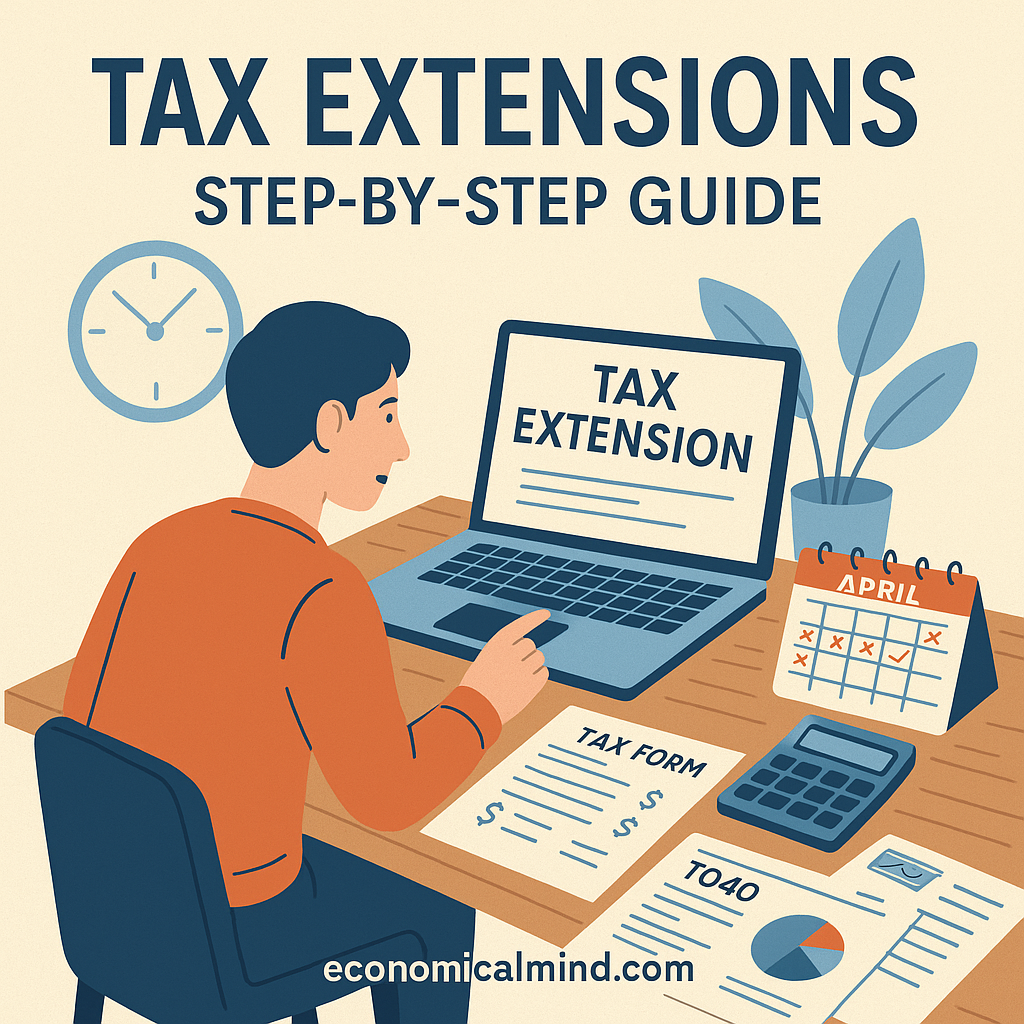
Life happens — and sometimes, you just can’t file your taxes on time. Whether it’s missing paperwork, unexpected life events, or simply needing more time to get organized, the IRS allows you to file a tax extension.
A tax extension doesn’t exempt you from paying taxes, but it gives you extra time to file your return properly and avoid late-filing penalties. Here’s a clear, step-by-step guide to help you navigate the process.
Step 1: Understand What a Tax Extension Is
A tax extension gives you an additional six months to file your federal tax return — typically moving the deadline from April 15 to October 15.
However, this is an extension to file, not an extension to pay.
You must still estimate and pay any taxes owed by the original April deadline to avoid interest and penalties.
A tax extension is perfect if:
- You’re waiting for additional tax documents (like K-1s or 1099s)
- You experienced a major life change (move, job switch, etc.)
- You want more time to review deductions or credits
Step 2: Gather What You Need
Before requesting an extension, collect the following:
- Your name, address, and Social Security number
- Estimated total income and taxes owed
- Documentation for income (W-2s, 1099s, or other records)
- Payment method if you owe taxes
Having accurate estimates will make your extension request smoother and help you avoid underpayment penalties.
Step 3: File Form 4868
To officially request a tax extension, file IRS Form 4868: Application for Automatic Extension of Time to File U.S. Individual Income Tax Return.
You can do this in three ways:
- Online (recommended): File electronically through IRS Free File or tax software like TurboTax or H&R Block.
- By mail: Print and send Form 4868 to the IRS (check the address based on your state).
- Through a payment: If you make a tax payment online and select “Extension” as the reason, the IRS automatically grants you an extension — no form required.
If you file electronically, you’ll get a confirmation once your extension is accepted.
Step 4: Estimate and Pay Your Taxes
Even though you’re extending your filing deadline, you still need to pay estimated taxes owed by the regular deadline.
Here’s what to do:
- Estimate your total tax liability using last year’s return as a guide.
- Subtract taxes already withheld or paid during the year.
- Pay the difference using IRS Direct Pay or the Electronic Federal Tax Payment System (EFTPS).
If you pay at least 90% of what you owe, you’ll avoid most late-payment penalties.
Step 5: File Your Return by the Extended Deadline
Once your extension is approved, you’ll have until October 15 to submit your completed tax return.
During this time, gather any missing documents, verify your deductions, and double-check for credits you may have missed (like the Earned Income Credit or Child Tax Credit).
Filing before the extension deadline helps you avoid last-minute stress — and penalties if you miss it.
Step 6: Know What Happens If You Can’t Pay
If you can’t pay your tax bill in full by April, don’t panic. The IRS offers options:
- Short-term payment plan: Up to 180 days to pay in full.
- Long-term installment plan: Monthly payments spread over time.
- Offer in compromise: Settle for less if you qualify under financial hardship.
It’s better to communicate with the IRS early than to ignore the problem — penalties and interest only grow over time.
Bonus Tip: Extensions Apply to State Taxes Too
Most states that have an income tax also allow extensions, but you must file separately from your federal extension. Check your state’s Department of Revenue website for specific forms and deadlines.
Final Thoughts
A tax extension can be a lifesaver when you need more time to file accurately — but remember, it doesn’t delay your payment obligation.
By filing Form 4868, estimating your taxes, and meeting the extended deadline, you’ll avoid unnecessary penalties and give yourself peace of mind.
Taking a little extra time now can save you stress and money later.
